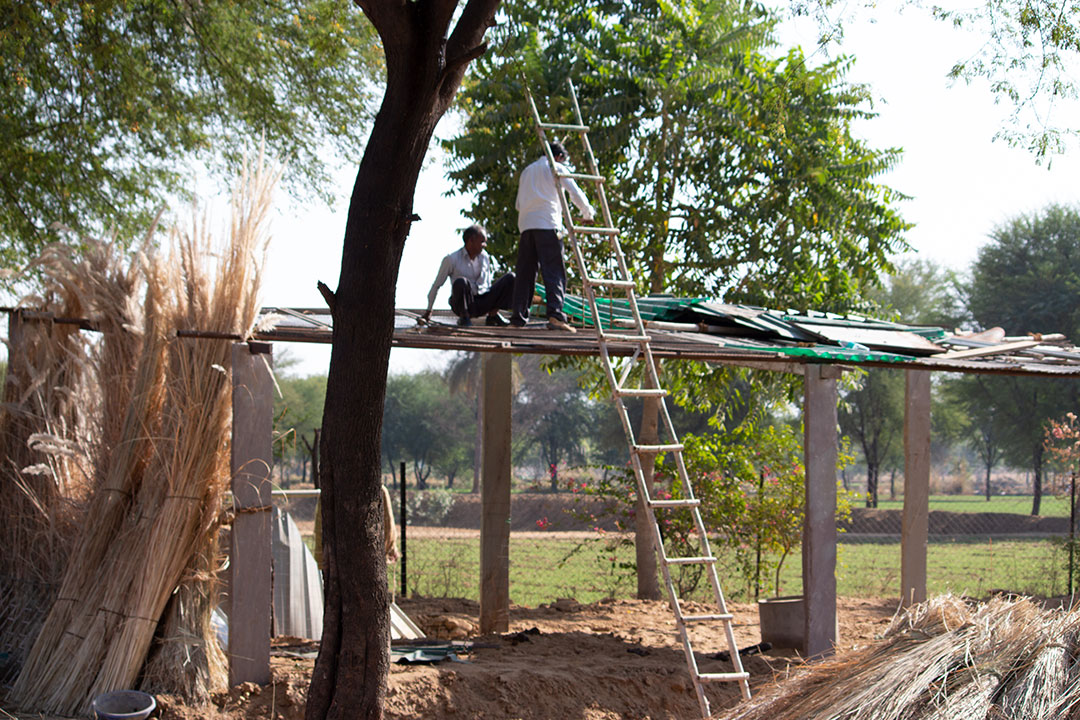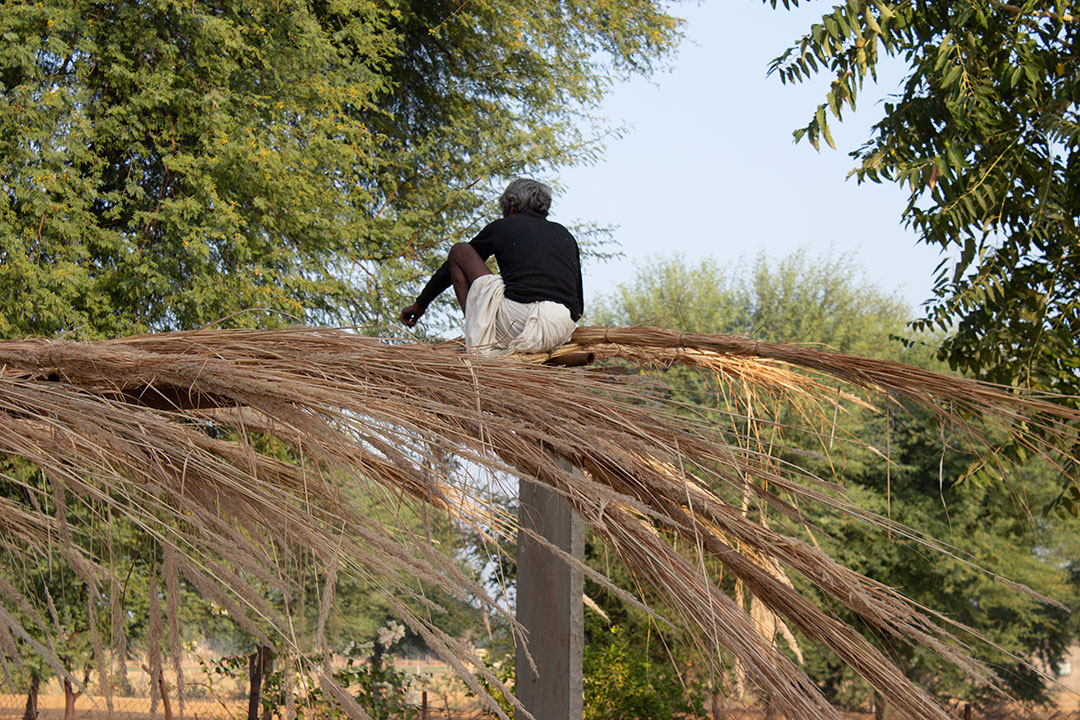

Key points
- A variety of tall grasses grow in the semi-arid region around Ikaki Bagh
- These grasses can play a vital role in checking soil erosion and ecological restoration
- Tall grasses have important traditional uses ranging from thatching to use in medicines
Visitors to Ikaki Bagh will notice large sheafs of tall grasses dotting the landscape around Ikaki Bagh. These sheafs are drying in the sun waiting for future use in thatching by local visitors.
Some of these grasses are indigenous to this area of Rajasthan, others are introduced species. Many are members of the Saccharum genus of tall perennial plants. One is especially useful, Saccharum spontaneum L. (known as Kans, Kansi and Kas in Hindi)
Ecological restoration
Growth of the tall grasses is encouraged by neighbouring village farmers in the Ikaki Bagh district. However, it is a challenging balance between harvesting these grasses and ensuring necessary new plantings.
Land adjoining Ikaki Bagh is an interesting example of the important role tall grasses can play. The area serves as a main local watercourse in the rainy season but is then subject to an extended dry season.
Tall grasses can grow well in open areas such as this. While some have described these grasses as ‘wasteland weeds’, they prove valuable in checking soil erosion.
If the rains do come in a heavy downpour and the watercourse flows, fragile and valuable soils are protected, and the capture of rainwater is better controlled.
These tall grasses are attracting increasing scientific research attention for the role they can potentially play in ecological restoration. Many parts of Rajasthan have suffered from severe ecological degradation for a variety of reasons including:
- overcropping,
- loss of soil health due to non-traditional farming practices,
- the growth in waste dumps from local industrial activities and
- water exploitation.
Worldwide, revegetation is recognised as one of the most widely used measures for controlling erosion and stabilising waste dumps. Revegetation programs helps maintain ecological services and restore ecosystems. They can be part of a holistic approach to restoring and enhancing rural livelihoods.
What is known is that tall grasses are well suited to our local sandy, friable soils. They are also relatively easy to plant using rhizomes and stem fragments.
Ikaki Bagh aims to support more scientific research, in conjunction with knowledge from local communities to try and confirm better practice applications for tall grasses.
Uses
Tall grasses, such as Kans have a variety of traditional uses throughout India:
- In Ayurvedic medicine. The roots of the plant are sweet and astringent with an emollient effect. They are often used to treat dyspepsia, piles, sexual weakness, gyneacological and respiratory weaknesses
- Fresh juice from the stems is used to help treat mental illnesses and disturbances
- Thatching
- Making mats, use in broom-making, baskets and simple types of ropes
- Paper-making
- Mulching
- A feed source for goats
Use at Ikaki Bagh and Jhinjha Village
To date, tall grasses have mostly been used for thatching at Ikaki Bagh. The main stable and animal enclosure has a fully thatched, all-weather protection roof.
Thatch is a natural insulator. Air pockets within long grass thatch insulate a building in both warm and cold weather. A thatched roof ensures that a building is cool in summer and warm in winter. When laid correctly, it will have very good resistance to wind damage.
Thatched roofs need regular upkeep and maintenance to limit deterioration. The type of thatching used at Ikaki Bagh should last between 15 and 25 years before re-thatching is required.
Visitors to Ikaki Bagh
Tourists to India are welcome to visit Ikaki Bagh at any time. You can see a variety of examples of thatching at the farm and at the nearby Jhinjha Village.
Visitors can be taken on an escorted walk from Ikaki Bagh to the local village and see the growth and use of tall grasses in the local landscape.
It is also possible for visitors to discuss some of the medical uses of tall grasses with local villagers. Grasses are notoriously difficult to identify for the non-specialist.
Visitors with expertise in tall grasses, including their use in ecological restoration would be very welcome at Ikaki Bagh. One particular task is to identify and document tall grasses growing locally, as a form of simple database for future use.

